Aproximaciones Multidisciplinarias al Color
El encuentro internacional “Aproximaciones Multidisciplinarias al Color” tiene el objetivo de proporcionar un espacio de diálogo entre artistas, científicos y pensadores, quienes trabajan y se cuestionan al color, con el fin de reflexionar sobre sus posibilidades desde diferentes puntos de vista, establecer vínculos entre disciplinas y romper las fronteras que las separan.
PONENTES
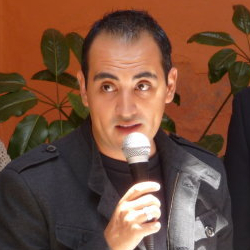

Francisco Guevara
Fundador y Co-Director Ejecutivo de Arquetopia. Se especializa en ética levinasiana aplicada al diseño de proyectos transculturales y artísticos, así como al análisis de la performatividad en las prácticas artísticas contemporáneas. Como artista visual, Guevara investiga la construcción histórica de los procesos de diferenciación y su relación con la performatividad de la identidad.
Paul Majkut
Doctor en Filosofía. ha sido galardonado con una beca Senior Fullbright Scholar Specialist. Profesor en el Departamento de Artes y Humanidades de la Facultad de Letras y Ciencias de la Universidad Nacional. Impartió un curso avanzado sobre cultura y sociedad estadounidense en la Universidad de Jyvaskyla, en Jyvaskyla, Finlandia.

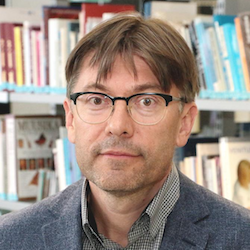
Melinda Campbell
Doctora en Filosofía. Profesora del Departamento de Artes y Humanidades de la Facultad de Filosofía en Universidad Nacional de La Joya, California.
Tõnu Viik
Profesor de filosofía en la Universidad de Tallin, Estonia. Doctor en Filosofía egresado de la Universidad de Emory, Atlanta. Su investigación actual está dedicada a la fenomenología cultural centrada en procesos de formación de significado socialmente condicionados.

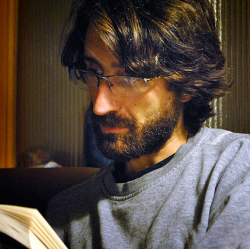
Luis Daniel Aguilar Davidov
Comunicólogo con experiencia en el ramo audiovisual y cinematográfico: edición, dirección, producción, cine-fotografía y fotografía. Especialidad en diseño digital (Universidad Iberoamericana Puebla). Experiencia en ponencias y talleres nacionales y extranjeros.
Pascuale Calone
Doctor en Filosofía de la Imagen en Francia, asimismo cuenta con una maestría en Dirección por la Academia Internacional de Cine de Río de Janeiro, Brasil. Como director y guionista, se encuentra desarrollando desde 2011 la trilogía cinematográfica “Divina Proporción” entre Francia, México y Japón. Colaboró en la dirección de películas premiadas en Cannes y Venecia.

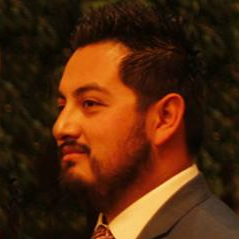
Sheng-li Chilián Herrera
Directora en la Escuela de Artes Platicas y Audiovisuales de la BUAP. Licenciada en Lingüística y literatura hispánica, Maestra en Letras Iberoamericanas, editora de periódicos, revistas y libros desde hace 20 años, escribe ensayo y hace crítica literaria, gestión cultural y académica en diversos espacios públicos.
Sergio Adrián Abarca Gutiérrez
Artista plástico, expositor en galerías de arte nacionales e internacionales, ha sido seleccionado en diversos festivales de arte. Actualmente es docente en arte contemporáneo.
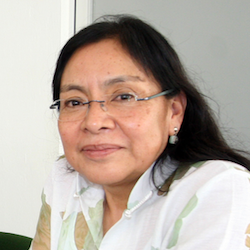

Judith Percino Zacarías
Doctora en Filosofía en el Departamento de Polímeros del Instituto de Química de Kazajstán, Alma-Ata, de la antigua U.S.S.R. Directora del departamento de Internacionalización de la investigación en la Benemérita Universidad Autónoma de Puebla.
Elizabeth Percino Zacarías
Licenciada en Física (Facultad de Ciencias Físico Matemáticas de la BUAP). Cuenta con Maestría y Doctorado en Ciencias con especialidad en Óptica (Instituto Nacional de Astrofísica, Óptica y Electrónica).
PROGRAMA
Día 1: miércoles 6 de marzo de 2019
Inauguración: 9:30
Panel 1: 9:40-11:50
9:40-10:20
De los colores a la pintura figurativa ¿Cómo vemos el color?
Sergio Adrián Abarca Gutiérrez
Idioma: español.
10:20-11:00
Where Do Colors Come From: The Methodology of Dawn
Paul Majkut
Idioma: inglés.
11:00-11:40
Colorear con luz
Elizabeth Percino Zacarías
Idioma: español.
Relatoría: 11:40 a 11:50
Receso: 11:50-12:00
Panel 2: 12:00- 15:00
12:00-12:40
Cuerpo, armonía y color
Pasquale Calone Cesare
Idioma: español.
12:40-13:20
The Phenomenology of Color Experience
Melinda Cambell
Idioma: inglés.
13:20 – 14:00
Añil, Texto y Textil
Francisco Guevara
Idioma: español.
14:00 -14:40
Falling in love with machines? The colors of our emotions
Tõnu Viik
Idioma: inglés.
Relatoría: 14:40 a 14:50
Día 2: jueves 7 de marzo de 2019
Panel 3: 10:00 a 12:30
10:00 -10:40
El color en doble sentido
Sheng-li Chilián Herrera
Idioma: español.
10:40 – 11:20
Química e investigación- La percepción del color
Judith Percino Zacarías
Idioma: español.
11:20 – 12:00
Échame las luces, la cámara y el color
Luis Daniel Aguilar Davidov
Idioma: español.
Relatoría: 12:00 a 12:10
CURSOS
Día 3 y 4: lunes 11 y martes 12 de marzo de 2019
The Court of Colors and the Methodology of the Morning
Paul Majkut
This course is an aesthetic discussion of the appearance of color in the natural world at dawn and answers the question, “Where do colors come from?” Lectures suggest that those who want to answer this question must wake before daybreak and commit themselves to a “Methodology of the Morning.” They will see and greet the gradual arrival of colors in the natural world as they return from a wild party at the “the Court of Colors,” an allegorical place to which colors escape to at night and partake in festive masquerade balls.
Topics discussed include:
• The Court of Colors
• The Loss of Colors
• The Methodology of the Morning and the Dawnist School of Color
• The World Welcomes the Return of Color
• Dirty Light
• A Conversation with Red
• A Conversation with Yellow
• A Conversation with Green
• A Conversation with Blue
• The Marriage of White and Black
• The Flight of Colors
• Dawnists and Twilight Friends
• The Invitation to Color
11:00-13:00
Cámara Gesell, Sur 1, CCU
Color Illusions, Color Appearances, and Real Colors
Melinda Cambell
In his influential and now classic work, Interaction of Color (1963), artist and teacher, Josef Albers demonstrates his contention that art is not an object, but art is an experience. This same can be said of the property of color itself: colors are not properties of objects as conceived in the current understanding of what an object is in physical science; that is, an independently existing collection of matter with a determinate size and shape (at a time in a particular location). Rather, color is a property of experience. While experience may indeed be conceived as objective in nature, the objectivity in question has features that are traditionally thought of as subjective, i.e., mental, and objective, i.e., physical. So, the reality of color is found neither in the surface of an object such as a painting, nor is it to be discovered “in the head” or among the mental properties of the artist who makes the painting. The colors of the objective world are located in the psychophysical events that take place when perceivers of a particular type, such as humans equipped with normal trichromatic vision, engage with surfaces or volumes or expanses of space in certain conditions of illumination. Albers differentiates “factual from actual” colors: what we see as the color of something is relative to the conditions of viewing, to the context in which it appears, and to the state of the perceiver of the color. His way of teaching artists and designers about the reality of color plays into this experiential understanding of color phenomenology, and in this course, we will work with some of the color studies created by Albers (and others) of various color phenomena and “color illusions,” such as afterimage color, simultaneous contrast colors, color spreading, color complementarity, color constancy, and more to arrive at a fuller vision of what color actually is.
11:00-13:00
Salón 110, Sur 1, CCU
The color of love in romantic relationships with synthetic alterities: a phenomenological approach.
Tonu Viik
Is it possible to establish romantic relationships with computer programs or synthetic androids? Can technological alterities become partners of human romantic affairs? In order to answer these questions, we need to know what would change in human experience of love if it were directed towards an artificial being. But first we would need to describe human experience of love from the point of view of how it is experienced. This done, we can look at what would happen if the partner of human romantic relationship were an artificial being. Would it still be possible to experience something like love towards it, or in what sense would the experience of love alter as a result of involving technological alterity?
11:00-13:00
Salón 108, Sur 1, CCU






